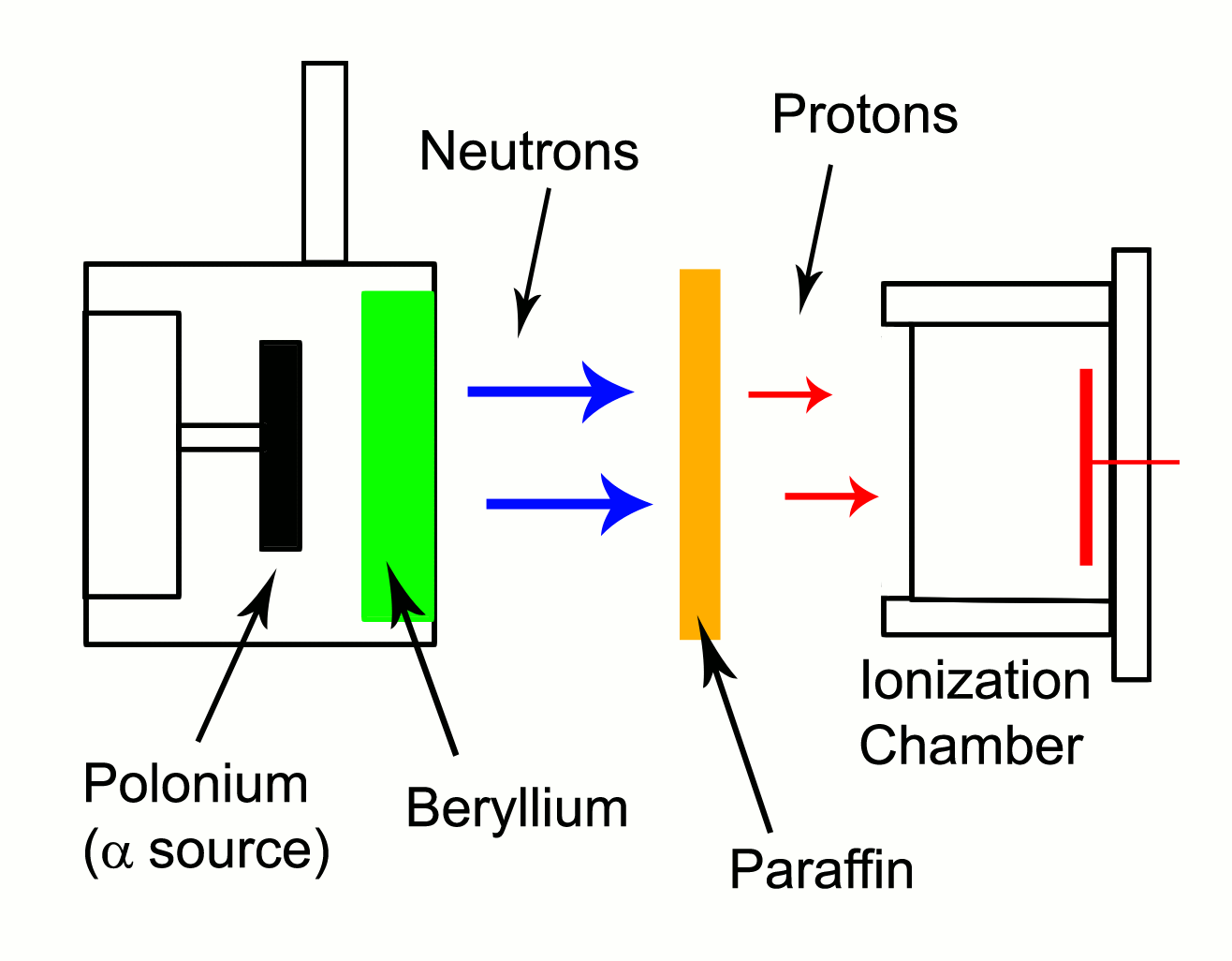The neutron was tougher to find since it had no charge. We now know that it's also unstable when by itself - the half life of a bachelor neutron is about ten minutes.
James Chadwick, working in Rutherford's lab and following the experimental ideas of others, decided to smash alpha particles into various materials and try to knock out the neutrons theorized by Rutherford. Those neutrons would then knock hydrogen nuclei (protons) out of paraffin (a hydrocarbon) and run them into an ionization chamber used to detect charged particles.
It worked so well that Chadwick received the 1935 Nobel prize in physics. Physicists then found natural neutron emitters everywhere just like we see that newly defined vocabulary word in everything we read.
Neutrons, since they weren't repelled by the positive nucleus, were great for bombarding nuclei and by the late 1930s scientists had verified that large nuclei could be split - nuclear fission had been discovered and it was promising for energy production. Mass was lost in the process and converted to energy in a quantity defined by the famousest equation in our universe:
Enrico Fermi headed up a team to make the first nuclear reactor under a football stadium at the University of Chicago in 1942. Uranium-235 nuclei were split into two smaller nuclei
and released a few neutrons to fission other nuclei nearby.
supercritical reaction
It worked. So they moved directly into developing a nuclear weapon since WWII was well under way.
It's never tough to split a nucleus as long as you pick the right one. Many just split themselves and we call that radioactivity.




No comments:
Post a Comment